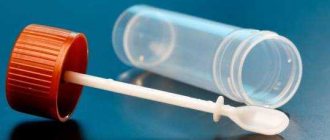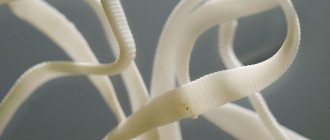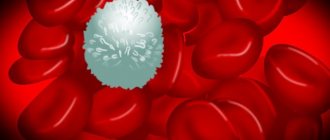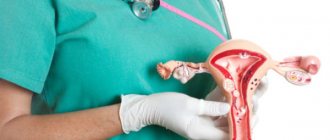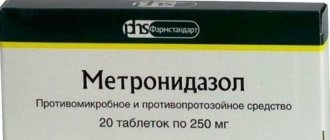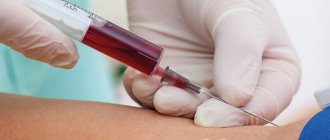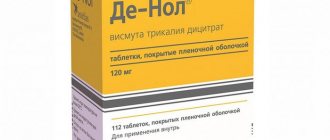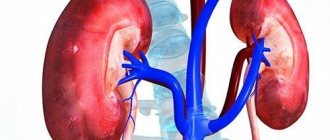Testing stool for helminth eggs is the fastest and easiest way to identify parasites that are in the human intestines. The fast pace of modern life often leads to an increase in intestinal parasites. Moreover, even a healthy lifestyle and proper nutrition do not always guarantee the absence of helminths in the body.
In order to promptly detect the presence of helminthic infestation, it is necessary to undergo periodic examinations, one of which is a stool test for worm eggs, carried out three times. How to properly collect material for analysis and how to prepare for this study? What is this analysis? The answers to these and many questions can be found in the following article.
Why is analysis needed?
A stool test to determine worm eggs must be taken at least 2 times a year. Unfortunately, adults often neglect this recommendation, but in vain, since more than half of cases of helminth infection occur against the background of mild symptoms or their complete absence. Most consider the main symptom of worm infection to be itching in the anal area, and if such a sign is not observed, they are in no hurry to go to the doctor for a referral for analysis.
Important! Specific symptoms of helminthic infestation (itching and burning in the anus, redness of the skin around the anus, a characteristic sensation of movement) occur only in cases where the parasites’ habitat is the intestines. If other organs are affected, such manifestations may be absent.
Some types of parasites, for example, roundworms, are able to penetrate other organs: the liver, lungs and muscle layers of the heart. But even with intestinal damage, the symptoms do not always manifest themselves clearly, so periodic examination of stool for worm eggs is necessary to prevent helminthiasis and possible complications.
Symptoms and signs of worms in humans
You should contact your doctor and ask for a referral for a stool test if you have the following symptoms (in cases where they are chronic):
- weight loss without objective reasons;
- pallor of the skin and mucous membranes;
- frequent allergies and infectious diseases (especially colds);
- pain in joints and muscles;
- skin problems;
- headache;
- itching and burning in various areas of the skin (typical of infection of the liver and pulmonary system);
- bowel disorders.
If a stool test confirms the presence of parasites, the doctor will select the appropriate treatment.
Important! If cases of helminthic infestation are detected in a family, all family members need to be tested and undergo preventive treatment, since helminthiasis spreads very quickly in domestic conditions. If there are pets in the apartment, anthelmintic drugs must be given to them too.
Habitats of worms
The effectiveness of testing for eggworms and basic recommendations
Fecal analysis for the presence of helminth eggs is the most effective method for detecting parasites in the human body. This type of analysis is suitable for identifying helminthic infestations and the extent of damage to both the body of a child and the body of an adult.
You should take care of your health, including taking all the necessary tests for eggworm on time.
The development of any disease can be prevented by first taking appropriate preventive measures.
Fecal analysis for worm eggs: how to prepare
Helminthiasis can be very dangerous for humans, especially when it comes to children, so it is important to take diagnostic methods responsibly and properly prepare for submitting material for analysis. 72 hours before collecting stool, doctors recommend stopping taking strong medications (except for vital ones), as some of them can lead to distortion of the test results.
If the patient is receiving antibiotic therapy, it is necessary to consult with the attending physician. It is impossible to interrupt the use of antibacterial drugs due to the possible loss of sensitivity of microorganisms to the active substance and the lack of effect from treatment with drugs of this group in the future. The best way out in this situation: complete the course of treatment and get tested a little later.
Important! After treatment with antibiotics, stool should be tested for parasites and their eggs after 72 hours.
Prohibited foods before taking a stool test for worm eggs
We should also talk about nutrition before the study. It is best to exclude from your diet 1-2 days before the test any foods that contribute to increased gas formation and can cause stool upset. These include:
- carbonated drinks;
- sugar;
- fresh vegetables (cabbage, onions, zucchini);
- grapes, bananas, persimmons;
- nuts in large quantities;
- White rice;
- fresh pastries and bread;
- kvass;
- industrial juice.
The consumption of berries should also be minimized or abandoned altogether. The fact is that most berries (cherries, blueberries, black currants, sweet cherries) contain a large amount of coloring pigments that can change the color of stool and distort the results of the examination. If you really want to eat berries, it is better to give preference to light varieties: white cherries, gooseberries, white currants. Compotes of dark berries and fruits are also allowed in minimal quantities (it is better to dilute them with water).
Foods with a laxative effect (prunes, zucchini) should not be eaten the day before the test.
Stool collection recommendations
When should you get tested?
A referral for a scatological examination for helminth eggs must be issued by a local pediatrician or family doctor in the following cases:
- when visiting a public swimming pool or sports sections;
- when preparing medical records;
- before registering a child for kindergarten or school;
- upon admission to the hospital.
The analysis results are valid for ten days. At the same time, this study should be taken quite seriously, since no one can be sure that the child is not infected with parasites.
Typically, such an examination is prescribed routinely in pediatric practice. Conducting an analysis in both children and adults is necessary if there are cats or dogs in the house, work activity associated with prolonged and frequent contact with animals, or suspicion of helminthiasis.
This test is also prescribed for the following negative symptoms:
- frequent gastrointestinal disorders: constipation or diarrhea;
- significant reduction in body weight;
- increased flatulence;
- frequent occurrence of ARVI;
- frequent and painful urination;
- severe itching in the anus;
- increased fatigue;
- allergic reactions.
Indications for such a study are problems with the cardiovascular system, liver, brain, lymph nodes or bladder.
How to give to an adult?
Many people confuse stool testing for worm eggs with scraping for enterobiasis. A scraping is taken from the skin in the anal area using a cotton swab moistened with clean running water. To detect the eggs that female worms lay, it is necessary to collect feces. It is better to do this in the morning immediately after bowel movement. If you didn’t manage to go to the toilet in the morning, you can prepare the material in the evening and put it in the refrigerator, but you must remember that feces can be stored at a temperature of +2 to +6 degrees for no more than 8 hours in a tightly closed container.
Video: How long and how to store stool and urine tests in the refrigerator
Important! Some people believe that stool that has been in the refrigerator for several hours will not show a reliable result, so they refuse to take the test altogether. This should not be done, since storage for several hours has no effect on the worms and their eggs. The two-hour storage rule should be followed only in cases where the material is submitted for determination of bacterial flora.
Collection of stool for analysis
There are several more recommendations from experts to obtain reliable results:
- feces for analysis should be taken from three parts: central, upper and lateral;
- the effectiveness of such a study is less than 45%, therefore, to obtain a true clinical picture, it is necessary to take 3-4 tests with an interval of no more than 3-5 days;
- It is necessary to urinate before defecation - it is extremely undesirable for urine to come into contact with feces.
Where can I do it?
You can take an eggworm test at a public hospital or clinic, or go to a private laboratory. In the second case, the result is obtained much faster, since they have less workload. In the table you can find out where the examination can be carried out and how much it will cost.
| Laboratory | City | Address | Price |
| Invitro | Dnieper | Pl. Sobornaya, 14 D. St. Rabochaya, 160 Ave. Mira, 35 | 105 UAH |
| Odessa | St. Tolstoy, 14 St. A. Filatova, 41 St. A. Koroleva, 63 | 105 UAH | |
| Moscow | St. 9th Parkovaya, 8 St. Kyiv, 20 Zatsepsky Val, 4 | 425 rub. | |
| Homotest | Nizhny Novgorod | St. Plotnikova, 3 St. Zvezdinka, 7 Ave. Union, 2 | 240 rub. |
| Saint Petersburg | St. Pargolovskaya, 7 St. Kollontai, 31-2 St. Savushkina, 16 | 210 rub. | |
| Ufa | St. Lenina, 43 | 210 rub. |
It is better to have your stool tested for worms at least once a year, especially if you have small children and pets in the house who roam outside.
Worms, although small, are parasites, and their existence brings a lot of inconvenience to humans. The course of treatment can be long and toxic, so the sooner the problem is detected, the easier it will be to eliminate it.
Video
Do I need to sterilize the container?
There is also no need to boil the jar in which the feces will be placed. It is enough to wash it in hot water with any detergent (experts recommend using laundry soap), then rinse it and the lid with boiling water.
To save time, you can purchase a sterile container for collecting tests at the pharmacy. It is convenient because it has a special spatula on the lid, which is convenient for collecting feces. At home, you can use a disposable spoon, match, toothpick or cotton swab for these purposes. It is strictly forbidden to use twigs or wood chips from the street, as they may contain parasites that will affect the test result, resulting in a false positive result.
Analysis for enterobiasis (scraping/imprint for enterobiasis)
In order to collect material for this analysis, it is necessary to prepare in advance a plastic test tube with a cap and a cotton swab soaked in glycerin. They can be bought at any pharmacy. In the morning, before going to the toilet and washing, putting on gloves in advance, spread the buttocks and scrape with a cotton swab . It is necessary to treat the folds near the anus.
Then the cotton swab is carefully inserted into the test tube, trying not to touch the walls, and the test tube is tightly closed with a lid . Next, you need to send the material to the laboratory as quickly as possible. Normally, the scraping does not contain pinworms or their eggs.
A one-time stool test cannot give a reliable result, because worms can be detected when the biomaterial is taken again
There is another version of this test called enterobiasis fingerprint . For this, you should purchase a special glass slide with adhesive tape at the pharmacy. Before defecation in the morning, you should put on gloves, remove the adhesive tape from the glass and apply it to the anus for a few seconds, after spreading the buttocks. Then the adhesive tape is glued back onto the slide .
It is very important not to touch the adhesive tape with your fingers, as this may not give the correct result. The slide should be delivered to the laboratory as soon as possible.
How to collect feces from a child?
If a child knows how to use a potty and knows how to ask for it, the collection rules will be the same as for an adult. Before defecation, the pot should be thoroughly washed with laundry soap and rinsed under a hot water tap. After the child goes to the toilet, use a wooden spatula to separate a small amount of feces (as indicated above) and place it in a container for collecting samples.
Special container for analysis
Many mothers make a serious mistake by trying to induce bowel movements with laxatives or suppositories. This should not be done, as the result obtained may be unreliable. Other substances should not be used to stimulate stool, including:
- Vaseline and petroleum jelly;
- glycerol;
- fatty creams;
- vegetable oil;
- soap, etc.
To avoid difficulties with bowel movements due to knocking, before taking the test, it is necessary to exclude from the child’s diet foods that can cause constipation (rice, bananas, brown bread), give the child more fluid, spend more time in the fresh air and increase physical activity. As a rule, these measures are enough for the child to go to the toilet in the evening or the next morning.
Video - Diagnosis of helminthiasis (worms) in children
If defecation does not occur
If your child cannot go to the toilet, you can use the following techniques:
- bend and straighten your knees several times (place the child on a horizontal surface before doing this);
- massage the stomach clockwise;
- take a warm bath.
Important! If adjusting your diet and the above measures do not help, you should consult a doctor to rule out serious pathologies.
Conducting research
The analysis is a direct method for the microscopic detection of helminths, their fragments and eggs. Also, during the test, cysts or vegetative forms of protozoa may be detected.
We recommend reading:
Staphylococcus aureus in a child’s stool: is treatment needed and when?
If any parasite is detected in the stool, confirmatory diagnostic tests are not necessary.
The type of helminth is determined according to its morphological characteristics.
After the test is completed, the laboratory sends the results to the attending physician. The specialist, depending on the data received, makes a decision on the need for treatment. If any of the helminthiasis is confirmed, then a course of therapeutic correction is prescribed with mandatory laboratory monitoring of effectiveness. Only after receiving negative test results for helminths and their eggs does a specialist confirm that recovery has occurred.
How to collect feces from a baby?
Most mothers collect the baby's feces directly from the diaper - this is absolutely not worth doing. If the child is small enough to move independently, it is better to be without diapers at all on the day of the test. You can put the baby on an absorbent or regular diaper and wait until the baby goes to the toilet.
If the child is more than 7-8 months old, and he is actively crawling and exploring the surrounding space, the mother will have to constantly monitor the child throughout the day. At the first urge to defecate, the child should be immediately transferred to a clean diaper, from which it is easy to collect the required amount of feces.
Ways of infection by parasites
Decoding the results and retaking the analysis
The result of the analysis is presented on the form. If there are no helminths in the sample, it is indicated that their eggs were not found during the study - the result in this case is called “negative”. If the analysis is positive, the form will contain the following conclusions:
- form of development of worms (eggs, larvae, their fragments);
- the number of parasites found per cubic centimeter of sample;
- the name of the type of helminth found in feces.
If you take the test once, it may not give an accurate result, since worms reproduce with a certain frequency (not every day). A three-time examination will be more effective - the analysis is taken daily for three days. You need to understand that timely detection of parasites in children will prevent complications and deterioration in health.
Loading…
Share with friends!
If the diagnosis is confirmed
By analyzing stool, you can determine not only the presence of parasites, but also their type. This is an important diagnostic point, since some effective drugs are active against a limited number of pathogens. The most common types of helminths found in humans are listed below.
| Group of worms | Representatives |
| Flukes | Schistosomes, liver flukes, cat flukes |
| Roundworms | Whipworms, roundworms, duodenal curveheads |
| Tapeworms | Broad tapeworm, bovine and pork tapeworm |
In case of a confirmed diagnosis, you should under no circumstances refuse treatment. You should also not take anthelmintic drugs before taking the test (for example, before entering kindergarten). Medicines in this group are very toxic and can cause serious complications (including brain damage), so their use should be monitored by specialists. In addition, if the type of parasite is unknown, such treatment may be ineffective, so you should not needlessly expose your body to serious risk, but rather get tested and undergo treatment prescribed by a doctor, if necessary.
Relevance of the analysis
Symptoms of helminthiasis are often hidden behind the “masks” of other diseases. Allergic skin rashes, causeless rises in temperature, pain and swelling in the joints or headaches, recurrent bronchitis and pneumonia, swollen lymph nodes - these and other symptoms may be the result of poisoning of the body with waste products of worms.
Treatment of symptoms is ineffective, since the cause (parasites) is not removed. Therefore, doctors recommend regular prevention of helminthic infestations twice a year. It is better to do this in spring and autumn; in summer there is no point in carrying out preventive work, since there is a high probability of re-infection. You should also regularly, once a quarter, be examined for the presence of helminths.
Blood test for the presence of worms in a child
Sometimes stool examination and scraping do not provide accurate information. To make sure there is no helminth infection, parents must bring their child for additional tests.
The child must pass:
- Blood for enzyme immunoassay;
- Blood for general analysis.
These studies will give more informative and accurate results.
In the presence of helminthic infestation, you can find:
- Low hemoglobin level.
- High white blood cell count. Basically, this is observed if the infection occurs with roundworms or pinworms.
How to prepare for a blood test?
To get an accurate result, you should properly prepare for the test.
The preparation is as follows:
- The study must be carried out on an empty stomach, but drinking mineral water (not carbonated) is allowed;
- Food is taken for the last time 8 hours before the test;
- Spicy and fatty foods are excluded from the diet 3 days before the study;
- 24 hours before the procedure, you must avoid taking medications; when this is not possible, you must notify your doctor.
The analysis result will be ready in 3–5 days. Sometimes the doctor doubts the result, then after 2 weeks a repeat examination is carried out. If helminthiasis is detected, the pediatrician prescribes the necessary treatment.
What is the hemoglobin level in the presence of worms?
If helminthic infestation is present, hemoglobin levels are significantly reduced. Anemia is more likely to develop in young children.
There are 2 reasons for the development of this disease:
- Most worms feed on blood and are hemophagous;
- Helminths produce toxins that inhibit hematopoiesis.
The consumption of adults is about 40-50 ml of blood, which causes the development of general anemic syndrome in the child.
The child begins to complain:
- To lethargy;
- Sudden weakness;
- Dizziness and headache;
- Ringing in the ears.
In this case, therapy with iron-containing drugs is absolutely ineffective; you must first cure helminthiasis, which is the cause of anemia.
The indicator of eosinophils in the blood with worms
A high level of eosinophils in the blood also indicates the presence of helminthiasis.
Usually this:
Helminthic infestation is manifested by complaints when eosinophilia is detected. In this case, a scraping is done for the eggs, as well as a stool examination.
How to get rid of helminths?
Stool analysis does not always show the correct results, therefore, to make an accurate diagnosis, the doctor always recommends passing stool three times, separated by several days.
After determining the presence of parasites, the doctor prescribes appropriate treatment with antiparasitic drugs. It is not recommended to take medications on your own, as the tablets have their own indications and contraindications.
When prescribing a medicine, the doctor must take into account the patient’s age group, the type of helminthiasis, the number of adults, general health and other features of the clinical picture.
To get rid of worms, the following medications may be recommended:
As a rule, to get rid of pinworms, it is enough to take the medicine once, then repeat the pills after one week (at the same dosage). After therapy, you need to be tested for worms again to ensure the effectiveness of the therapy.
During treatment, it is necessary to carefully monitor hygiene to prevent secondary infection with helminths.
Tests for the presence of helminths in the body have their own reliability periods. In this article we will tell you how long tests for eggworm and enterobiasis are valid, how the answer from the laboratory differs from a certificate for enterobiasis, who and why must undergo such tests.
It may be useful, before going to a parasitologist, to find out the internal and external symptoms of the presence of parasites in the human body and consider them as a test for helminthiasis.
What is the name of the test for worms (blood, feces and others) in adults and children
- What are the tests for parasites?
- What are blood tests for worms called?
- General blood analysis
- ELISA
- Hemoscanning
- Serological analysis
- PCR diagnostics
- What is the name of a stool test for worms and their eggs?
- General analysis of stool for worm eggs
- Scraping for enterobiasis
- What are the types of tests for parasites in children?
Parasites are organisms that live at the expense of another’s organism, feed on its resources and, through their vital activity, cause harm to it.
According to statistics, about 95% of people on Earth are infected with parasites, and even in developed Europe, parasites are recorded in every third inhabitant.
For pet owners, the risk of becoming infected with parasites increases to 99%.
One person can simultaneously suffer from five or more types of parasites. Therefore, in order to diagnose parasites in a timely manner and begin treatment, you need to know what tests for worms are called and where they can be taken. You can read more about testing for parasites at this link.
What are the tests for parasites?
Blood and stool tests can detect the presence of helminths in the body. Fecal analysis is carried out to detect worm eggs and allows you to determine the presence of a helminth and its type (pinworms, tapeworms, etc.).
Since the active life of the parasite is manifested by the release of toxic substances and sensitization of the body, characteristic changes in the blood formula can be seen in the analysis.
A complete blood count helps detect increased eosinophil levels and, less commonly, anemia. This study allows you to suspect or confirm the presence of a parasitic disease without specifying the type of parasite.
Stool analysis is not always informative. The absence of worm eggs in feces gives grounds to exclude only some types of helminthiases. To detect other parasites, a blood test is performed for antibodies to them (echinococcus, opisthorchid, trichinella, etc.).
What are blood tests for worms called?
Oriental fluke lanceolate fluke liver fluke Siberian fluke pinworms roundworms head lice lamblia Siberian fluke cat fluke blood flukes bovine and pork tapeworms
In medical practice, blood tests for worms are called as follows:
- General blood analysis;
- Immunological method (ELISA);
- Hemoscanning;
- Serological analysis;
- PCR diagnostics.
General blood analysis
First of all, during a general blood test, attention is paid to the manifestation of anemia and the number of eosinophils (a subtype of leukocytes).
Eosinophils are capable of destructive effects on foreign cells, therefore they take an active part in the anthelmintic process. But if the concentration is too high, they can cause allergic reactions. The number of eosinophils above normal indicates helminthic infestation, among other things.
Blood tests for helminths also show the following results:
- A decrease in hemoglobin with a simultaneous decrease in red blood cells (anemia);
- Increased protein content;
- Increased content of immunoglobulins;
- A high level of IgE antibodies, responsible for the antiparasitic effect, causes the appearance of allergic reactions.
- Eosinophilia reveals the following types of worms in a blood test: toxocara, roundworms, intestinal eelworms, hookworms, necatoria.
So, when affected by Toxocara, the level of eosinophils increases by 30 and even 90% of normal, and this condition may not change for several months and years.
Anemia is a sign of infection with roundworms, broad tapeworm, whipworm, bovine tapeworm, and pork tapeworm.
Regardless of what the blood test for worms is called, its main purpose is to assess the influence of worms and their vital activity on the composition of the blood.
ELISA
ELISA is aimed at identifying antigens to certain parasites. Modern diagnostics make it possible to thoroughly examine blood and determine:
- A type of helminth;
- How developed is the parasite's reproductive system?
- Degree of infection.
Testing for antibodies to helminths is by far the most accurate, giving reliable results in 95% of cases. An antibody test can be carried out in the early stages of infection, starting from the fifth day from the moment of infection.
As a result of determining antigens and antibodies, an effective treatment method can be selected. This study allows us to identify the most common types of parasites:
- Roundworms;
- Giardia;
- Trichinella.
The hemotest also allows you to determine the following parasitic diseases:
- Taeniasis;
- Opisthorchiasis;
- Fascioliasis;
- Amoebiasis.
The coding of the analysis consists of calculating the volume of antibodies JgM, JgG and JgA. To determine the stage of invasion, you need to know what these or other results indicate.
If all three antibodies are not detected in the body, then the result will be considered negative (JgM (-), JgG (-), JgA (-)). This means that a person has stable immunity to parasites. If immunoglobulin G turns out to be positive (JgG (+)), this will mean that the person has recently suffered this infection.
If the result is as follows - JgM (+), JgG (-/+), JgA (-/+) - this means that the disease is in the acute phase. The result of JgM (-), JgG (+/-), JgA (+/-) indicates that the person has acquired a chronic form of this disease. The result of JgM (+), JgG (+), JgA (+) indicates an exacerbation of this infection. If immunoglobulin M is negative (JgM (-)), it will indicate complete recovery.
Hemoscanning
How is the blood hemoscanning method (blood scanning using a dark-field microscope) fundamentally different from a traditional clinical blood test?
First of all, when performing hemoscanning, we look at a “live” drop of blood.
The analysis is carried out immediately, in the presence of the patient, at a very high magnification (approximately 1000 - 2000x) on a dark-field microscope connected via a video camera to a computer monitor. This allows the patient, during hemoscanning, to see for himself all the processes taking place in his blood in real time.
The nutritionist performing the hemoscan explains what is happening on the monitor screen to the patient.
A dark-field microscope and hemoscanning method allows analysis at a magnification of over 1000x, which allows you to see the state of blood cells: red blood cells - their shape, contours, mobility, their “sticking together” (the process of blood cell sludge).
Hemoscanning clearly shows (visualizes) the state of platelets, lymphocytes and leukocytes in the blood over time.
With hemoscanning you can visually assess:
- Helminth larvae;
- Presence of other parasites;
- State of blood plasma;
- Presence of cholesterol crystals
- Uric acid salts;
- The presence of orthomonophosphate crystals (a sign of calcium deficiency);
- Presence of bacterial flora;
- The presence of fungal flora in the blood;
- Presence of yeast flora;
- Helminth larvae.
Serological analysis
This is another type of research. This method is used when it is necessary to identify protozoan and multicellular parasites not only in children, but also in adults. For research, they take not blood, but serum.
The analysis determines antibodies to various parasites. A serological study can even determine what infectious diseases the body has already encountered quite recently.
Despite the good information content, this study has a drawback; it does not always make it possible to determine the stage of the disease, and it can be difficult to make an accurate diagnosis. Therefore, it is necessary to carry it out again after 10-14 days. After comparing the results, a conclusion is reached.
PCR diagnostics
PCR diagnostics (polymerase chain reaction) is a highly accurate method for diagnosing numerous infections and helminthic infestations, which is based on the study of human genetic material (DNA and RNA).
Depending on the purpose of the study, blood, saliva, sputum, genital secretions and other biological materials are used. It often happens that parasites that are different in nature can cause the same symptoms of the disease.
PCR diagnostics allows you to determine the presence of a pathogen, even with a minimal content of its strains in biological material.
What is the name of a stool test for worms and their eggs?
The following types of stool examination for the presence of parasites are distinguished:
- General analysis of stool for worm eggs;
- Scraping for enterobiasis.
General analysis of stool for worm eggs
A stool test for helminth eggs is a microscopic examination whose purpose is to detect parasites in the lower digestive tract.
This laboratory test is performed when:
- Carrying out a medical examination or registering a patient for treatment in a hospital,
- The presence of symptoms of helminthic infestation,
- When a child enters kindergarten or school,
- Obtaining a certificate for a swimming pool or a medical record.
Features of fecal analysis for helminth eggs:
- In case of ascariasis, microscopic examination reveals parasite eggs in the intestinal stage of the disease. During the migratory phase, roundworm larvae are found in the sputum, and an increased level of specific antibodies is found in the blood. If roundworm eggs are found in the duodenal contents, this indicates the presence of parasites in the bile and pancreatic ducts;
- Enterobiasis (pinworms) - a scraping from the perianal folds is examined. The diagnosis of enterobiasis is established if pinworm eggs or helminths themselves are detected. The study is carried out three times, with an interval of 3-7 days;
- Giardia Lamblia - repeated microscopic examination of stool is performed. Warm stool should be examined once a week for a month. In modern conditions, highly sensitive test systems have been developed that make it possible to detect total antibodies in the blood and antigens of Giardia cysts in feces using the ELISA method. Vegetative forms and Giardia cysts can be detected by bile microscopy in 50%;
- In case of strongyloidiasis, control of the effectiveness of treatment is carried out only by examining bile (even if the parasite was detected in the stool) 1 month after treatment.
Symptoms of the presence of worms in the body
To identify worm eggs in a person, you need to seek help from a medical laboratory and test your stool for worm eggs. This test is prescribed not only to visit a particular institution, but also on the recommendation of a doctor who suspects something is wrong in the patient’s body. It would be better if every person knew how this or that parasite manifests itself. Each of them behaves and manifests differently, but there are symptoms common to parasites that you should pay attention to. Don't neglect:
- Periodic pain in the abdominal cavity.
- Frequent gastrointestinal disorders or regular constipation.
- Obsessive itching in the anal area.
- A constant dry cough, without obvious symptoms of a cold or ARVI.
- Decreased appetite.
- Lethargy.
- Grinding of teeth in a dream.
- Fatigue and loss of strength.
Decoding
Normally, worm eggs should not be found in the results of stool tests and scrapings. However, the absence of parasitic particles in the biomaterial does not yet indicate that the child is completely healthy. It is possible to state with confidence that there are no helminths in the baby’s body only if the results of all tests for eggworms, carried out in a row with a slight interruption, are negative.
If, as a result of diagnostics for enterobiasis, no eggs of pathogens are found, this does not indicate the absence of other types of parasites.
A blood test reveals class M and G antibodies produced in the child’s body in response to infection with one or another type of worm. If IgM antibodies are found in the test results, this is a sign of recent parasite infection. The disease occurs in an acute form. IgG immunoglobulins indicate the development of a chronic form of helminthiasis.
If no antibodies of either class are found in the blood, this means that the child is not infected with this type of worm. However, this result does not exclude the presence of other types of helminthic infestations.
Rules for collecting biomaterial for research
You need to defecate in a dry, clean vessel or pot. It is not allowed to take feces from the water in the toilet. In addition, you need to make sure that urine does not get on the feces; you should empty your bladder in another place.
You need to take material from several places in the stool: from the initial portion, from the middle from the end, from the depths and from the surface. Not everyone knows how much stool is needed for an eggworm test. The test sample should be approximately the size of a walnut.
Immediately after collecting the material, you need to close the container tightly so that the feces do not dry out or become airy.
Features of stool examination in the laboratory
To determine the presence of worm eggs in biomaterial, as well as their varieties, the following laboratory testing methods are used:
- Advocacy. With this method, the material is mixed with water, then settled, and the liquid fraction is drained. They do this several times. Enzymes and helminth eggs have a higher specific gravity, and therefore are always in the sediment. The sediment after repeated washing of the stool is visible under a microscope; the parasites are clearly visible.
- Exhaustion. This method is used to determine helminth particles. The sample submitted for analysis is brought into a semi-liquid state, placed in a Petri dish, light particles are removed with tweezers and examined under a microscope or magnifying glass. In this way, helminth particles can be identified and their type can be determined.
- Thick stroke. This method is more informative; it makes it possible to analyze a large amount of feces, unlike other methods. A pea-sized sample is placed on glass, then pressed against a transparent polymer plate soaked in a liquid that has an antireflective effect. After an hour, the material acquires the required degree of transparency and is analyzed under a microscope. This method is the most progressive, its reliability is approximately 85%.
- Native smear. This research method is done under a microscope; a drop of emulsion made by diluting feces with water is required. Thanks to this, it is possible to identify the eggs of protozoan parasites and worms. But with a small amount in the biomaterial, they may simply not appear in the analyzed stool, which is why the negative result will be false.
Carrying out a stool test for helminths using any of the listed methods does not require much time; the result can be obtained within a day. Typically, delays occur due to workload in laboratories.
A breakdown of the stool test for helminth eggs is described below.
How long do worms live in humans?
How long do worms live in humans?
Each type of parasite can live in the human body for a different amount of time. Their lifespan directly depends on their variety and living conditions.
Here are some examples of the life expectancy of different helminths:
- Pinworms can live in the human body for about three months.
- The lifespan of roundworms in humans is up to one year
- Hookworm lives on human resources for up to three months
- Whipworms can live with humans for two years
- A wide tapeworm may not leave a person until he is twenty-five years old.
- Flukes are record holders in this regard - they can go through life with a person hand in hand for forty years
Fecal analysis
Worms most often settle in the intestines, but can also live in other internal organs - liver, heart, lungs, gall bladder, uterus. Some of them tend to constantly migrate throughout the body. Despite this, the main task of each of them is to lay eggs. The latter always end up in the feces. Worms lay eggs directly in the intestines or on the surface of the anus. When defecating, they pass into the feces. There may also be some types of live worms, for example, pinworms, dead ones, and body parts of adult individuals. All this is material for analysis.
It is almost impossible to detect worm eggs in feces at home. They are so small that they can only be seen under a microscope in the laboratory.
Stool analysis will help examine the body for the presence of worms in the body and get a quick result. Diagnosis is carried out to prevent helminthiasis and to confirm the diagnosis.
Ways to induce a bowel movement
Physiological processes are not always amenable to conscious control; it is not easy to force the intestines to release waste products on demand immediately when needed. The easiest way to collect stool to study worm eggs is for those patients who are used to going to the toilet after waking up in the morning, since laboratories usually accept all biomaterials for analysis in the morning.
To stimulate the intestines for bowel movements, it is undesirable to use anal suppositories or enemas, as this reduces the likelihood of obtaining the correct test result for helminths, which is not very high anyway.
Morning bowel movements can be achieved naturally if you follow some recommendations:
- drink cool water after waking up;
- have breakfast in 15-20 minutes;
- If there is no desire to go to the toilet within twenty minutes after breakfast, you need to do a light abdominal massage, as well as exercises that enhance intestinal peristalsis.
Self-massage of the abdomen is done while lying on your back. You need to relax your stomach, you should stroke in a spiral near the navel, movements are directed clockwise. It is more convenient to do this if you clench your fingers into a fist.
After the massage, you need to do the following exercises to stimulate the intestines for emptying: relax and draw in your stomach while standing on all fours. Lying on your back, you need to pull your knees to your chin and then return to the starting position.
If there is no effect from all the measures listed above, the material for analysis will have to be collected in advance.
It is important to find out in advance how to take a stool test for worms.
Symptoms of infection
Round and flatworms surround us everywhere. Parasite eggs get into water, plant and animal food, and then infect humans. Helminths can live in all organs. They mechanically damage the mucous membranes, destroy cells, and pollute the body with waste products. Detecting parasites is not easy; this requires complex diagnostics.
One way to identify foreign creatures is a blood test. What is a blood test for parasites called? This depends on the method of studying the biological fluid.
What types of tests need to be done for parasites:
- General blood analysis.
- Immunological studies (ELISA RNGA, RSK, RNIF).
- PCR (polymerase chain reaction).
Sometimes a biochemical study is also indicated if there is a suspicion that the liver is affected. The type of analysis is prescribed by the attending physician. For study, blood is taken from a vein, very rarely from a finger.
Rules for donating blood
Blood for parasites is taken in a sterile clinic. There are several rules and recommendations on how to donate biological fluid for study:
- The material is taken in the morning on an empty stomach (eight hours after the last meal).
- 48 hours before the test, you should not eat salty, spicy, fried or fatty foods, or drink alcoholic beverages.
- You must not smoke on the day of sample collection.
- It is advisable to stop taking medications 14 days before submitting the material.
If it is impossible to interrupt the course of taking medications, then their names should be reported to the doctor and laboratory assistant.
The composition of the blood can reveal the presence of foreign agents and the stage of the disease. Some methods allow you to accurately determine the type of parasite.
General blood analysis
A general blood test includes counting of formed elements, leukocyte formula, determination of hemoglobin level, and hematocrit.
If parasite infestation is suspected, the leukocyte count is of particular importance. If there is inflammation in the body, it is shifted to the left - the number of young leukocytes increases.
A blood test will also show an increase in eosinophils. Capillary (from a finger) and venous blood is donated for research.
An immunological blood test for the presence of parasites is based on the determination of specific antibodies. Antibodies are proteins (immunoglobulins) in the blood that are produced when foreign agents (antigens) enter the body. Antibodies identify and bind antigens, prevent their proliferation, release of toxins, and also trigger a complex mechanism for forming an immune response.
The following immunological tests exist:
- Linked immunosorbent assay. Shows the presence, quantity, type of antigens, concentration and class of antibodies.
- Indirect hemagglutination reaction (IRHA). The erythrocyte fraction is exposed to different antigens, and the degree and nature of cell precipitation is assessed.
- Indirect immunofluorescence reaction (IRIF). The blood smear is treated with serum containing fluorochrome, and the sample is examined under a fluorescent microscope. If antigen-antibody complexes are formed, the glow intensity will be high.
- Complement fixation reaction (CFR). The antigen-antibody complex activates proteins of the complement system and triggers an immune response. If the complement remains free after interaction with the sample, then there are no antigens.
Enzyme immunoassay and RNGA have the greatest accuracy and specificity.
PCR blood test
Polymerase chain reaction is a highly accurate research method. During the reaction, fragments of foreign DNA in a sample of biological fluid are deciphered. You can accurately determine the type of parasite. The disadvantage of PCR is that it is impossible to judge the size of the population of organisms and the stage of development of the disease.
The enzyme immunoassay for parasites is very sensitive; it detects foreign agents even in small concentrations.
Depending on which parasites are determined, there are tests:
- On Giardia.
- For toxocariasis.
- For opisthorchiasis.
- For ascariasis.
- For echinococcosis.
The samples are placed in special wells and after some time they are glued to the bottom. The material in the wells is treated with antibodies to the desired antigen. After 1-4 hours, the contents of the containers are drained or washed to remove unbound antibodies.
Immunoglobulins are associated with specific tags. Enzyme is added to the wells and left for an hour. During this time, it binds to the mark and turns it into a colored substance. If there were no antigens in the sample, the antigen-antibody complex was not formed, and staining will not occur.
Enzyme activity is recorded using a spectrophotometer.
Blood for research is taken from the cubital vein, about 3-5 ml. ELISA must be repeated to monitor the progress of therapy.
When a child develops symptoms of a parasitic infestation, he should be taken to a pediatrician. Only a doctor prescribes an examination. In children, blood is taken from a vein to determine the presence of parasites. The rules for submitting a sample do not change:
- The material is given on an empty stomach.
- The day before the test, you should not eat fatty, fried, or spicy foods (if your child eats these).
- On the day of taking the material, you should not drink sparkling water.
A small child needs to be prepared in a playful way for the test so that he is not afraid of the syringe, blood and people in white coats. If the baby starts crying and twitching, the nurse may inaccurately remove the material, leaving a bruise on the arm. When the needle is removed from the vein, the child needs to hold the hand for 5-10 minutes, bending it at the elbow.
The presence of parasites in the human body can be suspected by the following symptoms:
- Abdominal pain of different localization. Pain can occur spontaneously or upon palpation.
- Itching of the anus, which gets worse at night.
- Weakness of joints and muscles.
- Decreased appetite and nausea.
- Increased appetite with profuse salivation.
- Intestinal dysbiosis.
- Stool disorders.
- Change in color of stool.
- Increased fatigue, apathy.
- Dizziness.
- Paleness of the skin.
- Insomnia or sleep disturbances.
- Irritability.
- Dermatitis.
- Urinary incontinence.
- In women - heavy vaginal discharge, menstrual irregularities.
If symptoms appear, you should consult a doctor and get blood tests. Enzyme immunoassay is recommended to be done two weeks after infection. But it is difficult to determine the exact moment when infection occurred. Therefore, material for ELISA is taken immediately. Examinations are always repeated several times.
The test results are interpreted by the attending physician. In the general analysis, attention is paid to the concentration of eosinophils. They are produced from the first days of helminth infection.
https://www.youtube.com/watch?v=QktBQ1h96SM
Interpretation of enzyme immunoassay is carried out according to antibody classes.
- Immunoglobulin M (IgM). They are produced 4 days after infection and are present in the blood for 6 weeks. The presence of IgM indicates an acute infection and active reproduction of parasites.
- Immunoglobulin G (IgG). They arrive 20-28 days after infection and are present in the plasma for several months or years. The presence of IgG indicates the disease is in the chronic phase. Exacerbation of chronic infection is characterized by a combined increase in the level of IgG and IgM.
- Immunoglobulin A (IgA). They are produced two weeks after the penetration of pathogenic organisms and disappear after 5-8 weeks. The presence of IgA indicates chronic infection.
If only IgM was found in the blood, then a stool test for parasites is taken after 1-15 months. If IgG is detected, the stool is donated immediately.
Modern methods of testing blood for the presence of parasites in the body are highly accurate and sensitive.
They make it possible to identify parasitic infestations at an early stage, accurately determine the type of foreign organism, and suggest the degree of infestation. Together with the blood test, an analysis of stool and duodenal contents is taken.
Signs of parasite infestation include:
- prolonged diarrhea;
- constipation;
- mucus and blood in stool;
- nausea;
- stomach ache;
- weakness;
- exhaustion;
- frequent allergic reactions;
- irritability;
- sleep disorders;
- night grinding of teeth;
- itching in the perianal area is especially characteristic of pinworm infection.
Less often, people are bothered by high fever and headaches.
Long-term infection in children and a pronounced clinical picture can affect their mental health.
In a clinical blood test, the patient shows an increase in eosinophils and leukocytes. There was a direct relationship between eosinophilia and the intensity of infection. The higher the number of eosinophilic granulocytes, the more severe the infection.
Signs of the disease are determined by the type of parasite that has colonized the lower part of the human intestine.
Analysis of stool for eggs of worms and pinworms can be carried out in acute and chronic form. The absence of parasites in the biomaterial under study cannot clearly indicate the absence of infection. Perhaps the number of parasites is too small to be detected under a microscope. Therefore, if symptoms persist, the doctor prescribes a repeat test in a few weeks.
Travelers are at high risk of helminthic infestation. In developing countries with warm climates, water treatment systems are insufficiently developed. Travelers become infected through drinking water and contaminated food, as well as by walking barefoot. It is known that some types of parasites are able to penetrate human skin.
How to prepare for the test?
The collection of biomaterial for research occurs according to a certain algorithm. How to properly take an eggworm test? If the doctor who examined you did not tell you about this, here are a few tips:
- You need to prepare in advance; a week before the procedure, you should stop taking antibiotics, antidiarrheal and antiparasitic medications. In order for the research results to be reliable, it is also necessary to stop using mineral and castor oil.
- Other examinations of the intestinal tract should be completed several weeks before taking the test.
- The donated biomaterial must be fresh, it can be stored for no more than 8 hours and only in the refrigerator.
- Do not allow urine to get into the stool sampled for testing. For maximum objectivity, biomaterial should be collected from different parts of fecal matter.
- The material for analysis is placed in a clean and dry container, tightly closed with a lid, on which data about the patient is indicated: last name, date of birth, time of collection.
A suitable container for testing for enterobiasis is a test tube with a long stick inside
It is necessary to understand that a single examination cannot guarantee one hundred percent accuracy in the absence of helminth worms. The result announced a day or week later may turn out to be a false negative. And if the patient’s condition does not change for the better, then additional biomaterial samples are prescribed. If the results are controversial, the doctor is obliged to refer the patient for a scraping, which will reveal enterobiasis.
